
A national flag is a flag that represents and symbolizes a given nation. It is flown by the government of that nation, but can also be flown by its citizens. A national flag is typically designed with specific meanings for its colours and symbols, which may also be used separately from the flag as a symbol of the nation. The design of a national flag is sometimes altered after the occurrence of important historical events.

The national flag of France is a tricolour featuring three vertical bands coloured blue, white, and red. The design was adopted after the French Revolution, whose revolutionaries were influenced by the horizontally striped red-white-blue flag of the Netherlands. While not the first tricolour, it became one of the most influential flags in history. The tricolour scheme was later adopted by many other nations in Europe and elsewhere, and, according to the Encyclopædia Britannica has historically stood "in symbolic opposition to the autocratic and clericalist royal standards of the past".
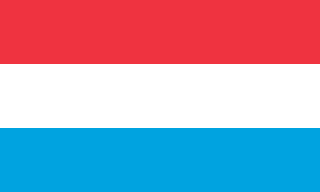
The national flag of Luxembourg consists of three horizontal stripes, watermelon red, white and light blue, and can be in 1:2 or 3:5 ratio. It was first used between 1845 and 1848 and officially adopted in 1993. It is informally called in the country, «rout, wäiß, blo».

The flag of the Russian exclave of Kaliningrad Oblast is a rectangle with a ratio of 2:3 divided into three horizontal stripes. The upper stripe is red, a thin yellow stripe in the middle and a dark blue stripe of the same size as the red bar. In the canton is a silver-and-black stylized medieval castle with open gates and the monogram of Empress Elizabeth Petrovna.
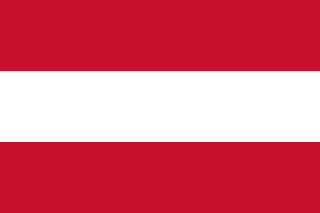
The national flag of Austria is a triband in the following order: red, white, and red.
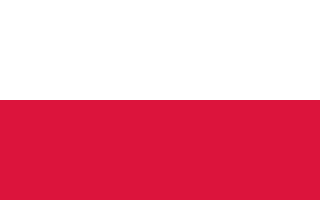
The national flag of Poland consists of two horizontal stripes of equal width, the upper one white and the lower one red. The two colours are defined in the Polish constitution as the national colours. A variant of the flag with the national coat of arms in the middle of the white fess is legally reserved for official use abroad and at sea. A similar flag with the addition of a white eagle is used as the naval ensign of Poland.
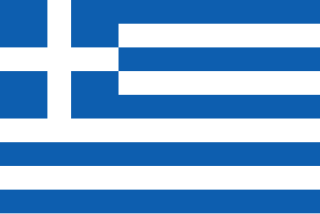
The national flag of Greece, popularly referred to as the Blue-and-White or the Cyan-and-White, is officially recognised by Greece as one of its national symbols and has 5 equal horizontal stripes of blue alternating with white. There is a blue canton in the upper hoist-side corner bearing a white cross; the cross symbolises Eastern Orthodox Christianity. The blazon of the flag is Azure, four bars Argent; on a canton of the field a Greek cross throughout of the second. The official flag ratio is 2:3. The shade of blue used in the flag has varied throughout its history, from light blue to dark blue, the latter being increasingly used since the late 1960s. It was officially adopted by the First National Assembly at Epidaurus on 13 January 1822.

The national flag of the Russian Federation is a tricolour of three equal horizontal bands: white on the top, blue in the middle, and red on the bottom.
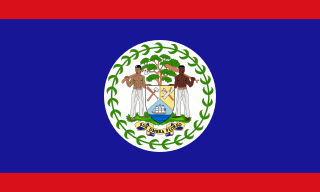
The flag of Belize was adopted on 21 September 1981, the day Belize became independent. It consists of the coat of arms of Belize on a blue field with red stripes at the top and bottom.
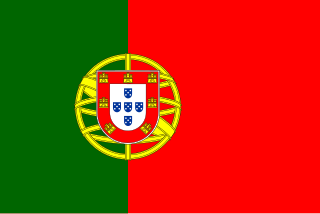
The national flag of the Portuguese Republic, often referred to as the Portuguese flag consists of a rectangular bicolour with a field divided into green on the hoist, and red on the fly. A lesser version of the country’s national coat of arms stands in the middle of the Portuguese armillary sphere and shield, centered over the colour boundary at equal distance. The flag was announced in 1910, following the 5 October 1910 revolution, inspired by the colours of the Republican Party and the design of radical conspiratorial society Carbonária.

The flag of Spain, as it is defined in the Constitution of 1978, consists of three horizontal stripes: red, yellow and red, the yellow stripe being twice the height of each red stripe. Traditionally, the middle stripe was defined by the more archaic term of gualda, and hence the popular name la Rojigualda (red-weld). That middle stripe bears the Coat of Arms.
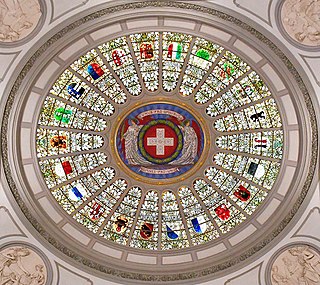
Each of the 26 modern cantons of Switzerland has an official flag and a coat of arms. The history of development of these designs spans the 13th to the 20th centuries.
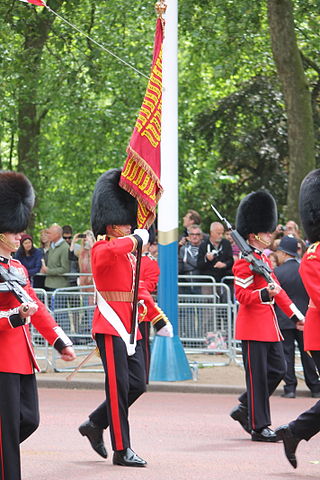
In military organizations, the practice of carrying colours, standards, flags, or guidons, both to act as a rallying point for troops and to mark the location of the commander, is thought to have originated in Ancient Egypt some 5,000 years ago. The Roman Empire also made battle standards reading SPQR a part of their vast armies. It was formalized in the armies of Europe in the High Middle Ages, with standards being emblazoned with the commander's coat of arms.

The following is a list of historical military colours, standards and guidons in different countries that do not exist today.
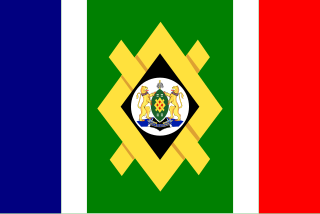
The current design of the flag of Johannesburg was adopted on 16 May 1997, replacing a previous version of the flag that had been in service since 20 October 1970.

The flag of Sint Maarten consists of a white triangle situated at the hoist charged with the constituent country's coat of arms, along with two horizontal bands of cherry red and navy blue. Adopted in 1985 shortly after the territory was granted a coat of arms, it has been the flag of Sint Maarten since 13 June of that year. Since the dissolution of the Netherlands Antilles on 10 October 2010, it has been the sole flag used in the constituent country.

An unofficial flag of Saint Barthélemy consisting of the coat of arms of Saint Barthélemy centered on a white field is used on the island. Officially, only the flag of France, of which Saint Barthélemy is a self-governing overseas collectivity, is flown in the territory.

The flag of Podlaskie Voivodeship, Poland is a rectangle divided into four horizontal stripes, that are, from the top to bottom: white, red, yellow, and blue. It was designed by Tadeusz Gajl, and adopted on 30 August 2002.



















